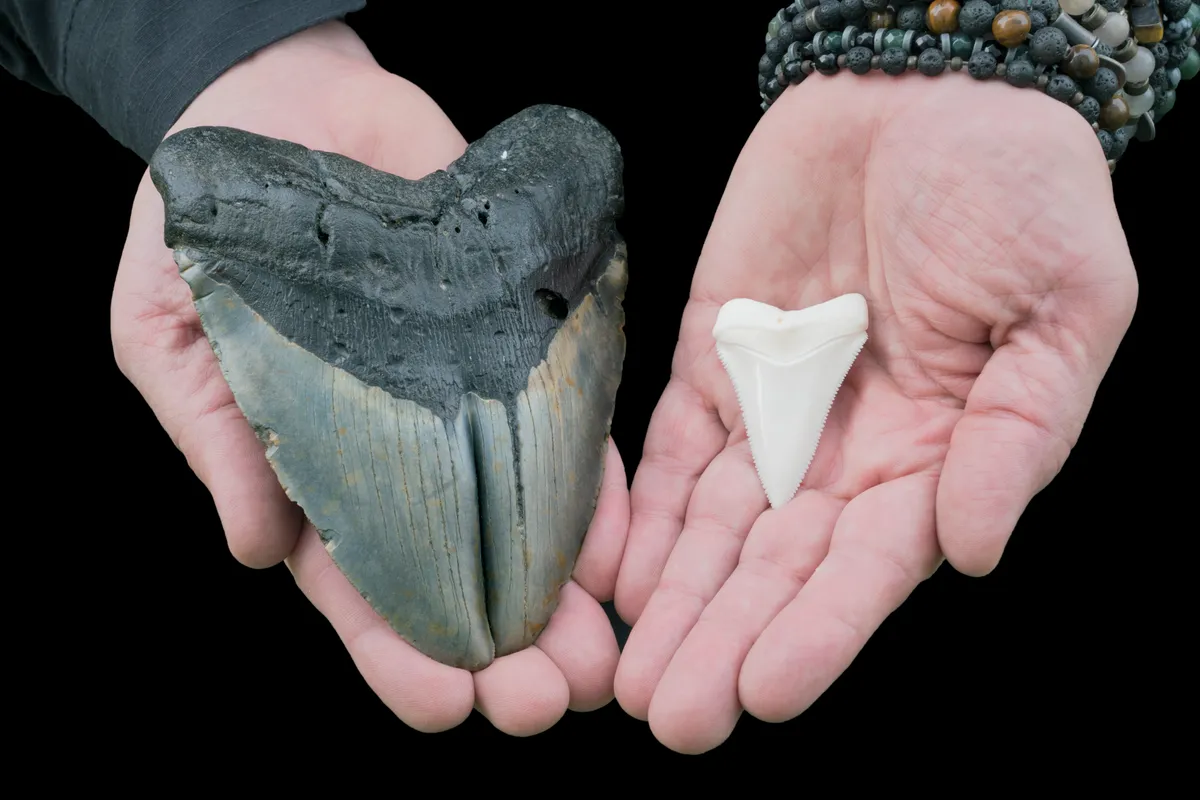What was megalodon?
It was a shark (Otodus megalodon), thought to have gone extinct 3.6 million years ago. And it was very, very big. It was the biggest shark to have ever swum in our seas and the largest predator the world has known. It was widespread, found in all tropical and temperate oceans.
How big was megalodon?
Scientists estimate that megalodon could grow up to 18 metres in length. For context, that’s the length of approximately three great white sharks. For a land-based comparison, imagine four Ford Focus estates parked bumper to bumper. That’s quite a fish.
- Terrifying prehistoric sea monsters: menacing ocean creatures that you'll be glad aren't alive today
What does megalodon mean?
Megalodon translates as ‘big tooth’, which is an apt name: just one of its gnashers can more than fill the palm of your hand. In contrast, a tooth of a great white shark is more or less the size of your little finger.
How many teeth did a megalodon have?
Megalodon had more than 270 teeth, arranged in rows. As with all sharks, these were regularly shed and re-grown.

What did megalodon eat?
Living it quite so large requires vast amounts of fuel. Megalodon was by all accounts a ferocious predator – a ferocious super-predator in fact – able to take substantial prey such as whales, seals, turtles and other sharks. It probably approached its quarry from behind, seizing it with those powerful jaws and chomping it down in a few mouthfuls.
Its bite-force was phenomenal, ranging from 100,000 – 180,000 Newtons. “T-Rex could bite with a force of 64,000 Newtons, enough to crush a car, Jurassic Park-style,” write Tim and Emma Flannery in their new book, Big Meg, due for publication in September. “But a bite of 100,000-180,000 Newtons would not just crush a car, but dismember it, possibly atomise it.”
Megalodon also had a vast gape spanning two metres, which enabled it to swallow killer whales whole (yes: megalodon could swallow a killer whale whole). Gulp.
Is megalodon bigger than a blue whale?
Not quite. Blue whales can measure up to 30 metres in length. But blue whales are not predators; they feed on krill.
When did megalodon go extinct?
Scientists don’t know exactly when megalodon died out, but they do know from fossil evidence that it was some time in the Pliocene (5.3-2.6 million years ago), when temperatures began to drop and the planet cooled. Much of the planet’s biodiversity was lost during this period. The closest estimated date for megalodon’s final swim is 3.6 million years ago.
Why did megalodon go extinct?
Again, scientists don’t know for certain, but there are various hypotheses. The significant cooling event and associated drop in sea levels that the planet experienced during the Pliocene had drastic and far-reaching consequences for all marine life. Ocean productivity diminished and many marine species died out, including a substantial number of large marine mammals that would have formed part of megalodon's diet.
Those creatures that did survive may have adapted to the cooler conditions and relocated to chillier waters, out of reach of this giant hunter. Megalodon, sitting at the top of the food-chain, would have started to go hungry. Lack of prey could have been compounded by competition from great whites for food, according to research published in 2022, as the diets of the two species are thought to have overlapped.
Cooling waters would have had major implications for megalodon habitat, particularly if, as some studies suggest, it had a preference for warm, tropical waters. As sea levels receded, the shark would also have lost its nursery grounds in the coastal shallows, and its regular migration routes between feeding and breeding grounds would have been disrupted.
In nature, you adapt or die. Megalodon, it seems, did not like change.
Main image illustration © Getty

